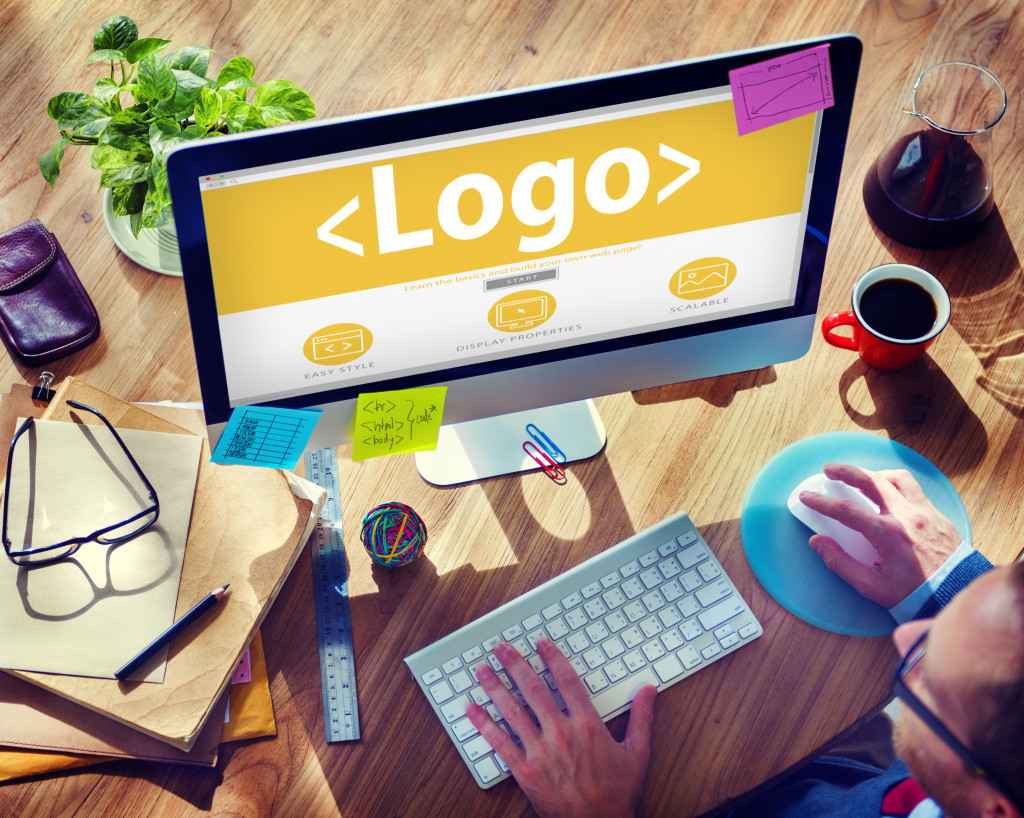The first impression someone gets of your business is often through its logo. A logo connects your brand and the audience, so creating a strong visual for your company is essential. This guide will help you develop a great logo that represents your brand identity and can be used on all of your marketing materials.
Keep your logo simple and easy to reproduce
You want your logo to be unique, memorable, and consistent across all your marketing materials so that it carries the same message every time. The simpler a logo is, the better. Some shapes in nature work well for logos — think letters A & O (the only two lowercase alphabetical characters that are symmetrical), and triangles or squares can also be effective when used sparingly in a design.
Logos use fonts too! Fonts are vital because they determine how legible the text is on a sign or other printed material. Don’t use a font just because it looks cool: make sure it’s readable by everyone who can see it (not just people with 20/20 vision).
Remember when choosing colors for your business logo: Black on white will always look sharp and professional. White on black shows up nicely, too but makes things look faded and old-fashioned.
Gray works well if you’re using dark gray because gray blends into black very well; light colors work best if they contrast against each other strongly so that one stands out from another — like blue vs. red or yellow vs. green.
Your logo design should be consistent with your brand identity
Once you have the perfect design, it’s important to ensure your logo is consistent with your brand identity. That means making sure that it can be reproduced quickly and consistently across all platforms, using the same colors and fonts so that no one will question whether or not this is supposed to be your business.
It should also be simple enough that customers don’t need a manual on how to use it—and yet unique enough that they can remember what it looks like in just a glance.
The best logos are memorable because they’re not boring! If you think about McDonald’s logo (or any famous fast food chain), they’re all similar but still very different from each other. That’s because their designers made sure those companies stand out from their competitors by creating something unique and memorable for their customers—something they’ll return for again.
Consider colors that represent your brand

A color is a powerful tool for communicating your brand identity. The colors you choose can influence how people perceive your company, so choosing wisely is important. So, for instance, if you ran an online beauty store and wanted to highlight your serum primer, you can go for a shade of golden. This way, customers will associate your product with the sun, which is a great way to convey the idea that it will help them look radiant and beautiful.
Also, in order to understand how colors affect people, it’s helpful first to understand the psychology of color. Color is not just another design element—it has its own set of rules and guidelines that determine how people react to specific colors.
The following are some of the most common types of color schemes used in logos:
- Monochromatic — one base color with shades or tones that differ slightly from each other (often only subtly)
- Analogous — three colors next to each other on the color wheel; they usually visually blend together well and create harmony among them when used together in an overall palette design
- Triadic — three colors spaced evenly across the spectrum (red, yellow, and blue); this will create tension between two opposite hues while still maintaining unity through similar tones
- Complementary — two colors opposite each other on the color wheel; they create visual tension, but when used together in an overall palette design, they often look good and visually blend well
Avoid using clip art, stock images, and templates when designing a logo
Clip art and stock images are overused. They’re everywhere, and chances are you’ve already seen a logo that uses the same image or font as you’re planning to use. Since they are so common, they do not make your business stand out from the crowd.
Using clip art or stock images can also be risky because it takes away your originality — a key element in building a brand identity. If you’re looking for something specific when designing your logo, avoid using clip art or stock images at all costs!
Final Thoughts
Logo design is an art. It takes time and effort to create something that will last. There are many things to consider when designing a logo — from color schemes to font choices. You want your logo to be unique, memorable, and easy to read at any size.
It needs to represent who you are as a business while also representing the industry in which you operate. By following these simple tips, you can create the perfect business logo that reflects your brand and makes a lasting impression.

